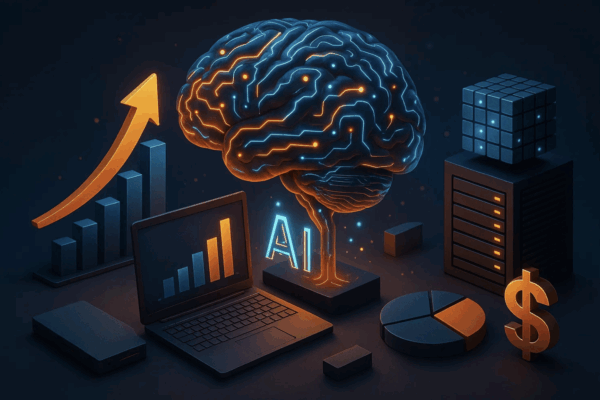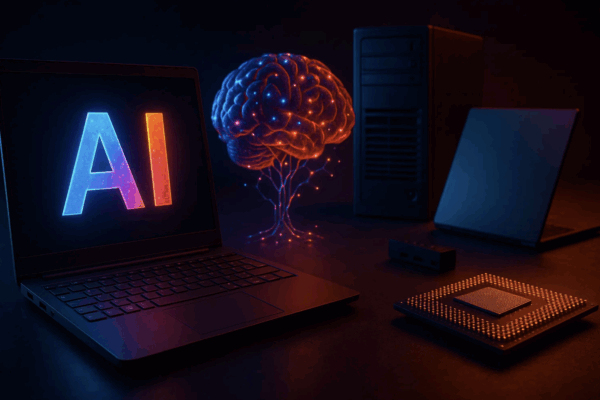

Apple Intelligence in Focus: Lessons Microsoft’s Copilot Missed
Artificial intelligence has become the centerpiece of today’s technology race, with major companies like Apple, Microsoft, and Google competing to define how AI will reshape the way we work, communicate, and live. In 2025, Apple’s unveiling of Apple Intelligence generated widespread discussion, not just for its technical capabilities, but also for its design philosophy and user-centric execution.
On the other side, Microsoft has invested heavily in its Copilot platform, embedding AI into Office applications, Windows, and the broader Microsoft ecosystem. Yet despite Copilot’s head start, Apple’s entry into the AI market highlighted several lessons that Microsoft seems to have missed. For enterprises, developers, and everyday users, this comparison is more than just branding. It’s a case study in how strategy, timing, and user trust shape the adoption of new technology.
Apple’s Entry: Why Apple Intelligence Matters
Apple is known for taking its time before entering emerging technology markets. The company rarely rushes to be first; instead, it waits until it can combine functionality with usability and security. This approach is evident in Apple Intelligence, which integrates AI into the Apple ecosystem in a way that feels natural rather than forced.
Unlike generic AI assistants, Apple has emphasized privacy, personalization, and seamless integration. Users don’t need to install new software or learn complex prompts. Instead, AI capabilities are embedded directly into apps they already use—Messages, Notes, Mail, and Siri.
The strategic focus is clear: Apple is not positioning AI as a standalone product. It is positioning AI as an invisible layer that enhances existing workflows. For users, this means fewer barriers to adoption. For Apple, it ensures that its ecosystem remains sticky and indispensable.
Microsoft Copilot: A Strong Start With Gaps
Microsoft’s Copilot has been one of the most visible AI initiatives in recent years. Integrated into Office applications, it has transformed tasks such as drafting emails, analyzing spreadsheets, and generating reports. For enterprises, Copilot promised a revolution in productivity.
However, the experience has not been perfect. Feedback from users highlights some challenges:
-
Complexity in real-world use: While Copilot is powerful, it often requires training or technical understanding to use effectively.
-
Inconsistent performance: The tool occasionally produces irrelevant or incorrect results, requiring manual adjustments.
-
Enterprise-first orientation: Copilot has focused heavily on corporate environments, leaving consumer-level adoption slower than expected.
These issues do not diminish Copilot’s value, but they highlight gaps that Apple Intelligence seems to have anticipated.
Lesson 1: Privacy Is Not Optional
Perhaps the most significant contrast between Apple and Microsoft is their approach to privacy and data handling. Microsoft’s Copilot often relies on cloud-based processing, raising questions about how user data is stored and used.
Apple, on the other hand, has doubled down on on-device processing and privacy guarantees. Many Apple Intelligence features run locally on iPhones, iPads, and Macs, ensuring that sensitive personal data never leaves the device. This distinction resonates strongly with users who are increasingly aware of data security risks.
The lesson for Microsoft: in the consumer AI market, trust is just as important as capability. Privacy-first design is not a feature—it is a necessity.
Lesson 2: AI Should Feel Seamless, Not Add-On
Microsoft positioned Copilot as an additional tool—something that enhances workflows but requires conscious activation. In contrast, Apple Intelligence is designed to feel embedded and effortless.
For example, Apple’s AI can rewrite messages with different tones, summarize long emails, or organize notes without the user having to navigate to a separate application. The AI blends into the user experience rather than interrupting it.
This seamlessness makes AI feel less intimidating and more accessible to everyday users. For Microsoft, the challenge is clear: AI adoption accelerates when the technology feels invisible, not overwhelming.
Lesson 3: Consumer Experience Drives Adoption
Microsoft Copilot shines in the enterprise sector, but adoption among casual users has been slower. Apple, on the other hand, started by targeting the consumer experience—making AI useful in daily communication, planning, and creative tasks.
This strategy matters because consumer adoption often drives broader cultural acceptance. When people grow comfortable with AI in their personal lives, they are more likely to embrace it in professional settings.
For Microsoft, this highlights a missed opportunity. By focusing heavily on corporate productivity, it overlooked how powerful consumer familiarity can be in shaping market dominance.
Lesson 4: Timing and Presentation Are Everything
Microsoft introduced Copilot early, establishing itself as a pioneer in AI-driven productivity. But Apple has shown that timing matters as much as speed. Rather than rushing a product to market, Apple waited until it could showcase a polished, secure, and user-friendly AI platform.
The presentation of Apple Intelligence also followed Apple’s long-standing formula: focus on real-world use cases, show how it integrates naturally, and emphasize the human experience over technical jargon.
This approach not only built excitement but also reduced the barrier to adoption. For Microsoft, the takeaway is clear: being first is valuable, but being trusted is transformative.
Lesson 5: Ecosystem Power Multiplies AI’s Impact
Apple Intelligence benefits from Apple’s tightly controlled ecosystem. Because hardware, software, and services are integrated, Apple can roll out AI features across devices with consistency and reliability.
Microsoft, by contrast, faces a more fragmented ecosystem, particularly in consumer markets where Windows devices vary widely in hardware capabilities. This makes consistent performance more difficult to achieve.
The lesson: AI is not just about algorithms—it is about the ecosystem that delivers them. Companies that control the full user experience have a significant advantage in ensuring smooth adoption.
What This Means for the Future of AI
Apple Intelligence and Microsoft Copilot are not mutually exclusive. Both will likely continue to shape how individuals and businesses use AI in the years ahead. However, the differences in strategy reveal an important truth: the winners of the AI race will not be determined only by technological innovation, but also by trust, usability, and timing.
For users, this competition is good news. It ensures that AI tools will become more secure, more integrated, and more useful. For businesses, it means paying close attention not just to what AI can do, but to how it is delivered.
Final Thoughts
Apple Intelligence has made a strong entrance into the AI space, not by trying to outdo Microsoft in raw capability, but by focusing on the human experience. In doing so, Apple has highlighted the areas where Copilot falls short: privacy, seamless integration, and consumer-first adoption.
Microsoft’s Copilot remains a powerful tool, particularly in enterprise environments. But Apple’s model shows that the future of AI belongs to platforms that combine power with trust and accessibility.
As the AI race accelerates, one lesson is becoming clear: the technology that wins will not just be the one that works best in theory, but the one that people trust, understand, and love to use in their daily lives.



